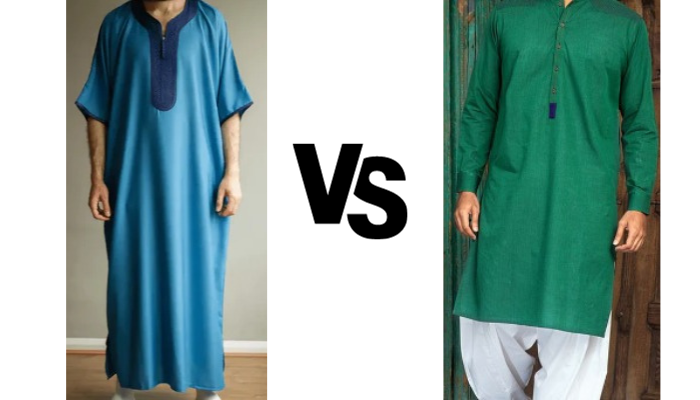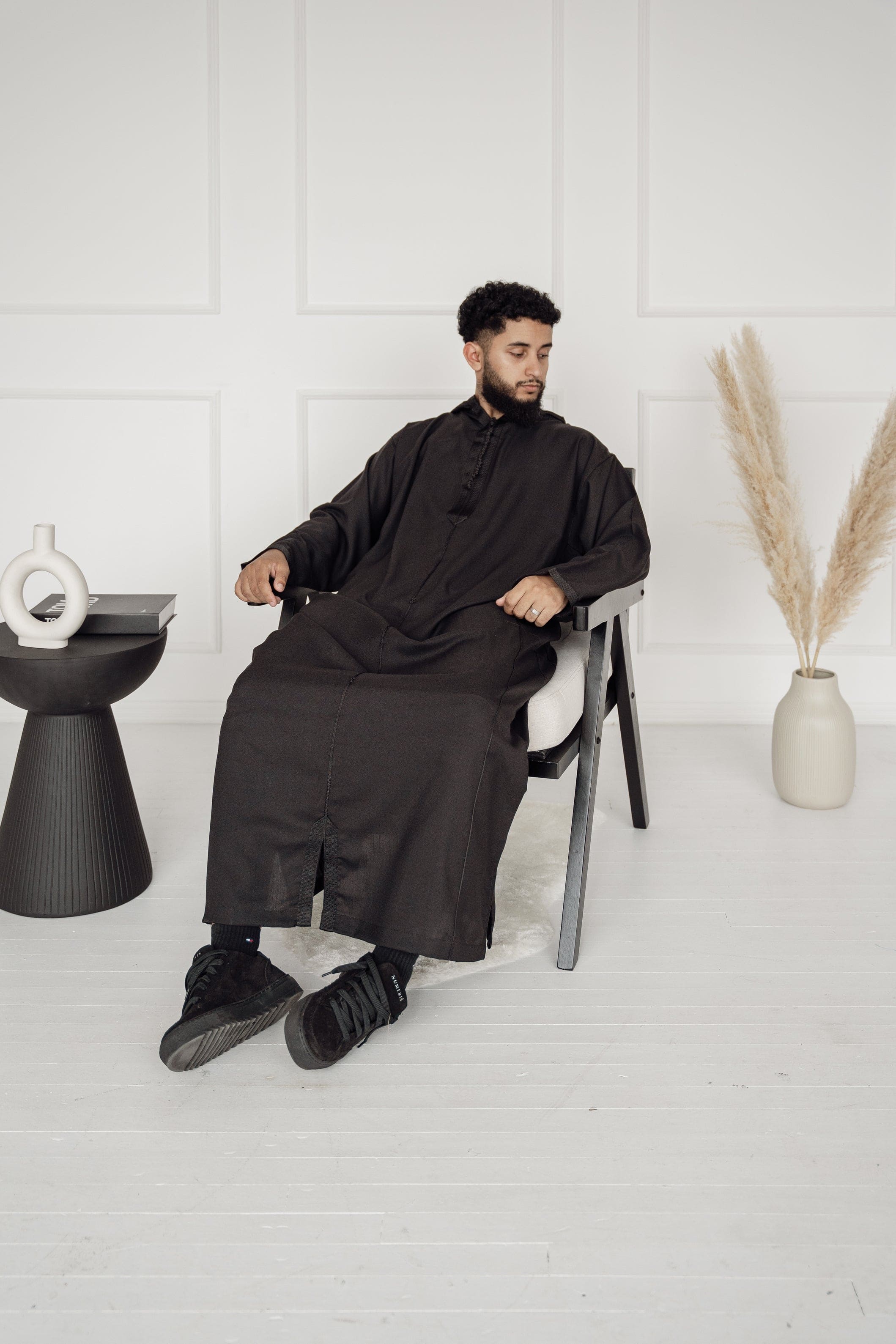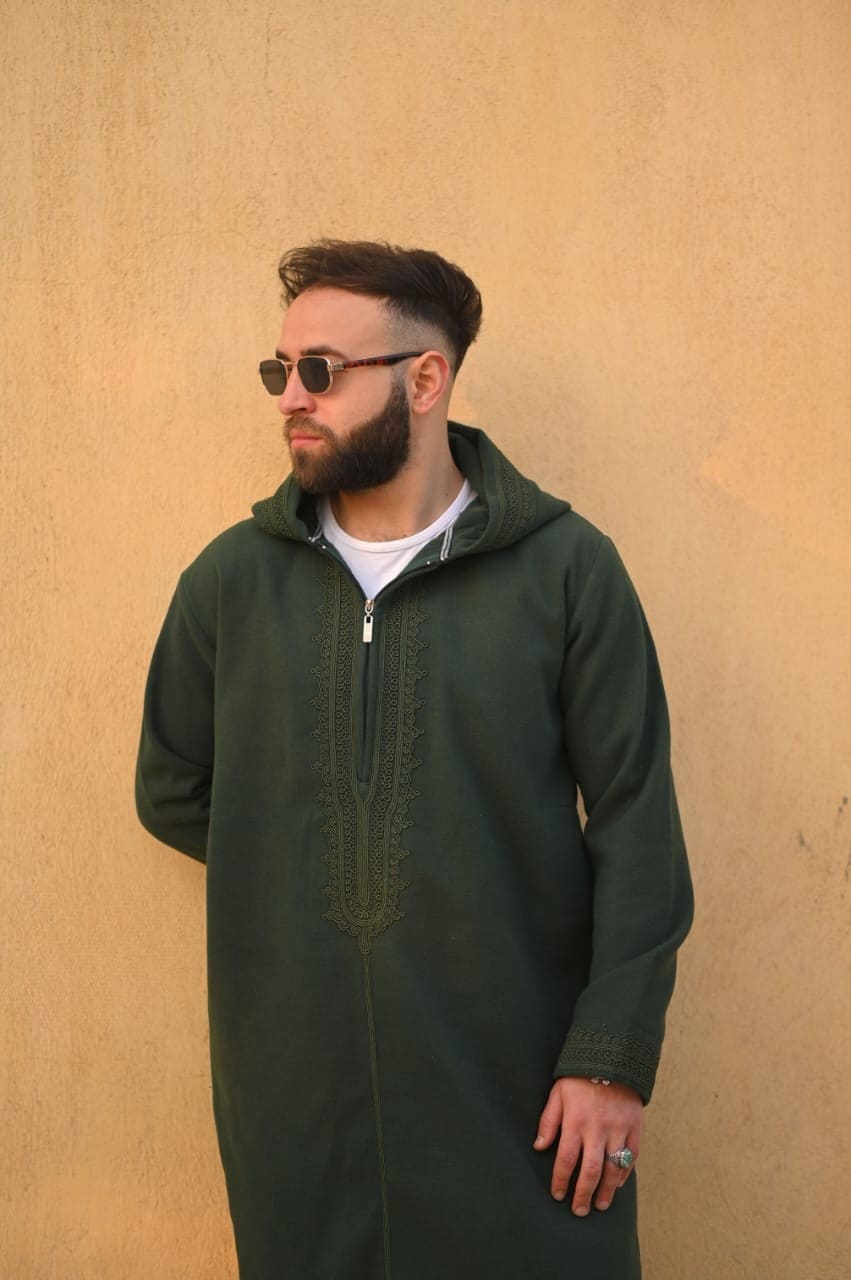The way you dress is more than just a means of covering your body; it represents the richness of your geographic location and its cultural heritage. Amidst the consistent progression in the textile and fashion industries, people who prefer modest clothing are often contemplating over thobe vs salwar kameez.
These two garments stand out in the varied tapestry of traditional yet modest clothing because they have originated from different locations and civilizations. Besides, they possess distinct traits that set them apart. It is paramount to dive into the details of thobe vs salwar kameez, their origins, and different modes of variations concerning their integrated blend of classic and contemporary styles.
Elegance and Simplicity of Thawbs
The Thobe has a long history that dates back millennia. Its free and flowing form is ideal for the Arabian arid environment. It was initially stitched from cotton and wool, which kept the wearer cool in the hot summers and warm in the colder desert nights, respectively.
Despite being available in different styles, the silhouette of Moroccan thobes remains eternally consistent. Typically, these dresses are white or cream in colour, but today's voguish statements offer a limitlessness.
Asian Vibrance of Salwar Kameez
Salwar kameez is also a traditional clothing worn by men and women in the Indian subcontinent, which includes The Islamic Republic of Pakistan, Bangladesh, Nepal, and India. It is famous for its countless array of bright and pastel colours with massive decorative patterns and embellishments.
The concept of wearing salwar kameez has its origins in the Mughal Empire, with its distinguishing two-piece style. The Mughal kings brought this dress to the Indian subcontinent, fusing Central Asian and local customary practices. Over the centuries, it has evolved into the classic attire you recognize today.
Thobe vs Salwar Kameez – What's the Difference?
Now that you're aware of the origins of the thobe vs salwar kameez, let's compare the two clothes, their exquisite traits, and their cultural significance.
Gender
Men predominantly wear the tobe, while both men and women wear the salwar kameez. Both outfits cater to a more excellent range of preferences and occasions.
Weather
Dishdashas are built for the arid climate and provide breathability and comfort. On the other hand, salwar kameez is appropriate for the different climates of the Indian subcontinent, with versions ideal for both scorching summers and mild to frigid winters.
Colours and Designs
Kanduras are often monochromatic, with white being the most common colour. In contrast, the salwar kameez serves as a colourful canvas that reflects the vivid culture of the region from where you belong.
Events and Occasions
Nowadays, thawbs are frequently reserved for ceremonial events and religious activities. With its adaptability and diverse flexibility, the salwar kameez may be worn informally, officially, or even as bridal wear – heavily embellished with textile accessories, including sequins and laces.
Symbolism
Kanduras are a means of representing gracefulness and modesty, while salwar kameez hail the richness of Asian diversity, tradition, and depth of cultural roots.
The Bottom Line
Summarising the discussion of thobe vs salwar kameez, it is evidenced that both symbolise distinct expressions of their individualised civilizations in the realm of traditional attire. Tobes portrays the exquisite simplicity and ideals of the Arabian Peninsula. In contrast, the salwar kameez, with its brilliant colours and elaborate motifs, celebrates the Indian subcontinent's diversity and richness.
Both garments have a particular place in the hearts of individuals who wear them since they connect them to their ancestral traditions. Finally, the choice between a thobe and a salwar kameez comes down to your preference and cultural identity, with both giving a unique and beautiful way to express via clothes.
If you're living in the United Kingdom and are going to attend any cultural event, visit New Arabia to customise your Middle Eastern or North African attires according to your preferences in any colour or style you desire.



